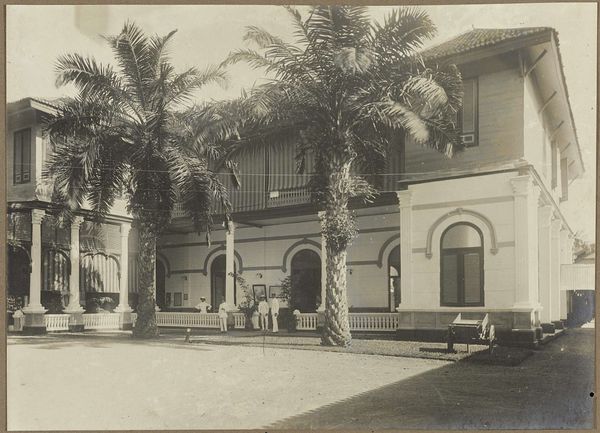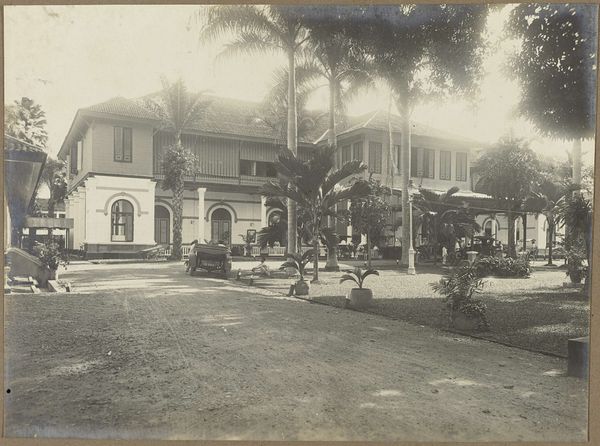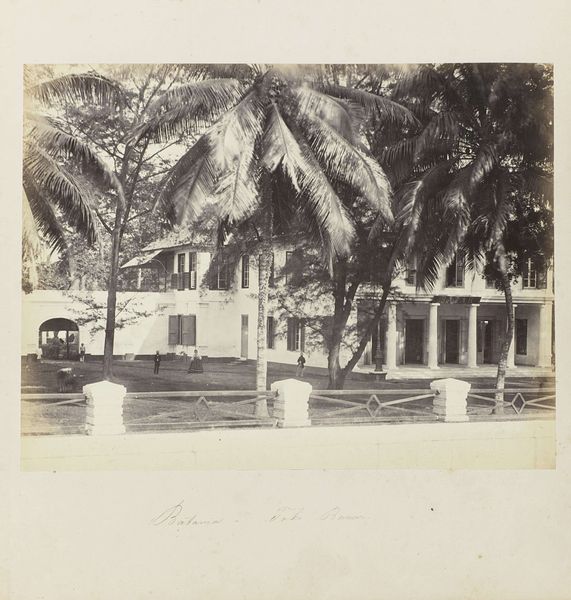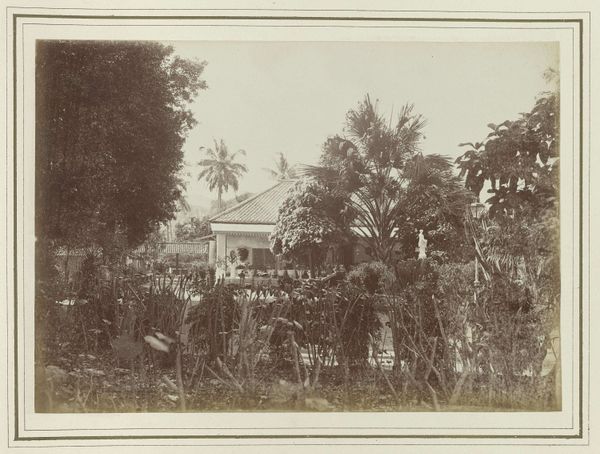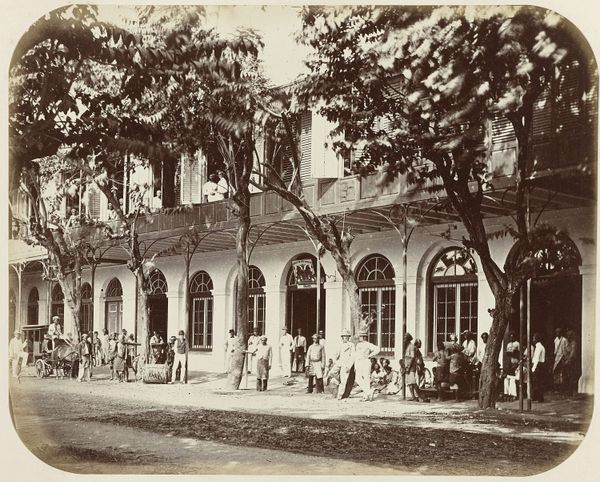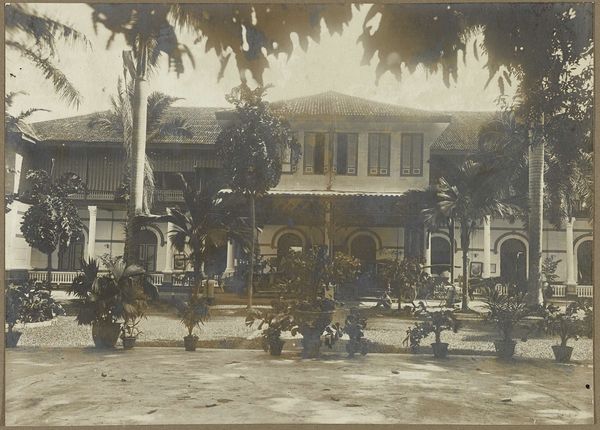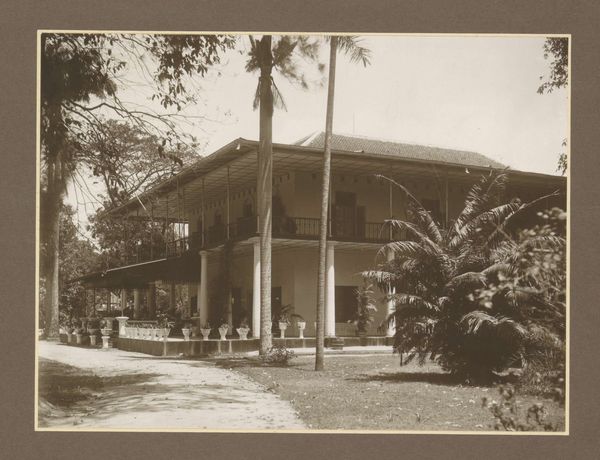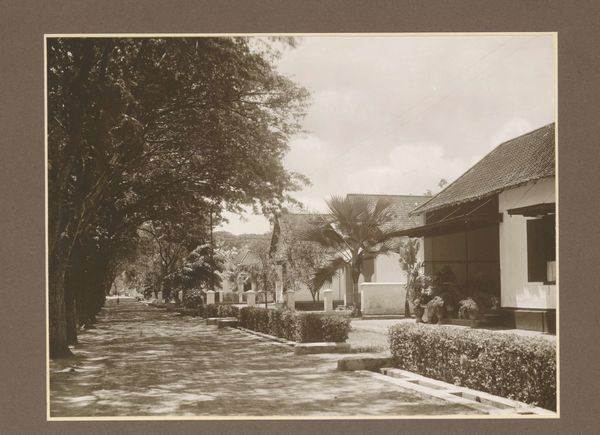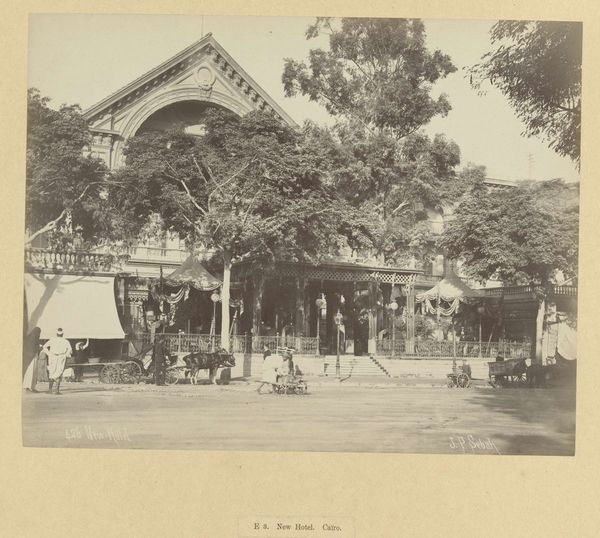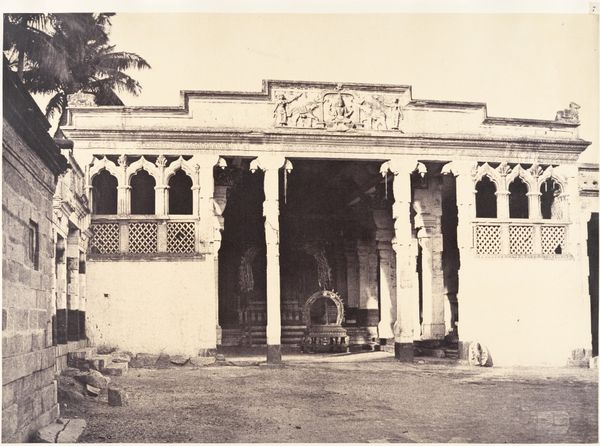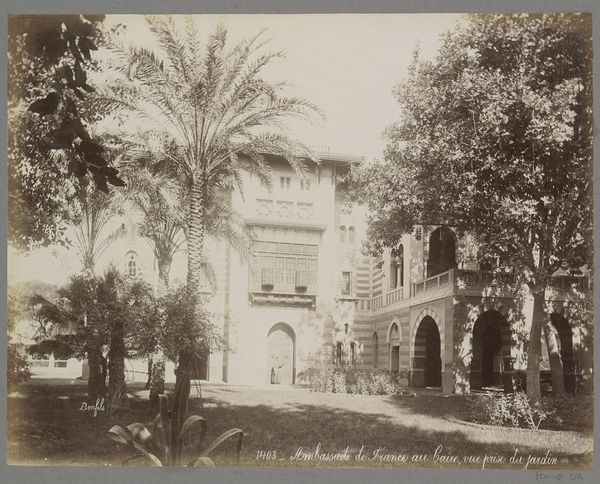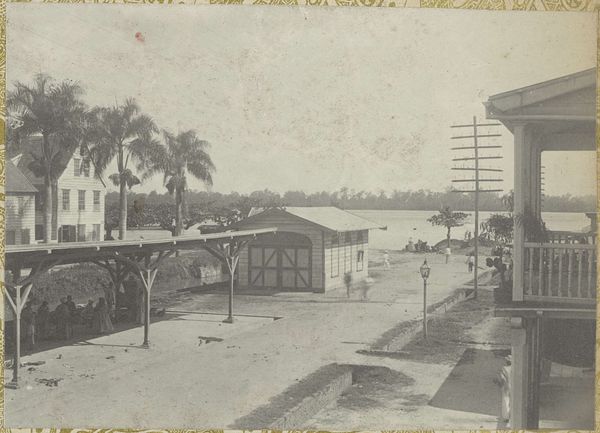
photography, architecture
#
photography
#
cityscape
#
architecture
#
realism
Dimensions: height 145 mm, width 203 mm
Copyright: Rijks Museum: Open Domain
Editor: This photograph, titled "Werkzamheden aan het gebouw van Rathkamp & Co." was taken sometime between 1914 and 1919 by an anonymous photographer. It captures the building in the midst of construction using realist style photography. What do you notice about the photograph? Curator: The photograph immediately draws attention to the interplay between the geometric rigidity of the architecture and the organic forms of the surrounding foliage. The composition is carefully structured, using the vertical lines of the trees and scaffolding to frame the central building. Note how the photographer captures different layers using depth of field: in front, the ground, and in the background the people within the building. This provides structural balance. Editor: I hadn’t thought about that layering aspect. How does this choice of composition affect our interpretation of the photograph? Curator: By layering the visual information using depth, the photograph moves away from purely documentary record to become more representational of colonial architectural projects during the turn of the 20th century. It asks the viewer to look carefully between each layer and think how it impacts the overall architecture that is being erected. Note, however, that by taking a distanced shot and positioning the building at eye-level, this removes emotional affect by establishing objectivity for the audience. The eye then must perform labor to establish subjectivity through analysis of structural integrity. Editor: That’s fascinating! So it’s more about the structures and organization than emotional resonance, ultimately drawing focus to the aesthetic construction? Curator: Precisely. The visual framework highlights and brings us to consider, with precision, its construction, composition, and aesthetic logic of the work, ultimately shifting to consider form. Editor: I appreciate you elaborating on this formalist interpretation. I will remember to look for these visual cues when I visit a new exhibit.
Comments
No comments
Be the first to comment and join the conversation on the ultimate creative platform.
